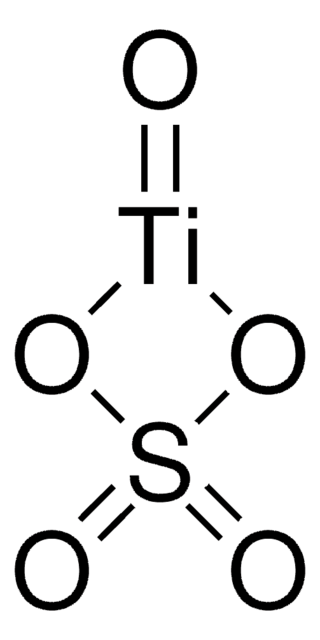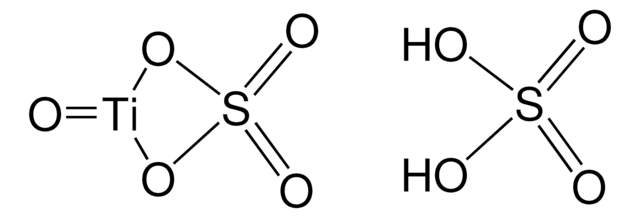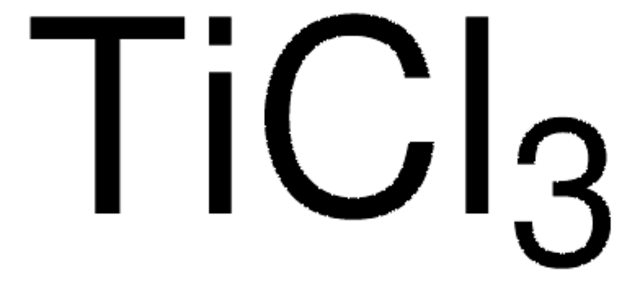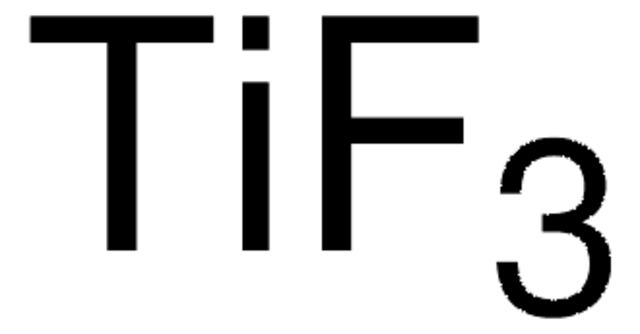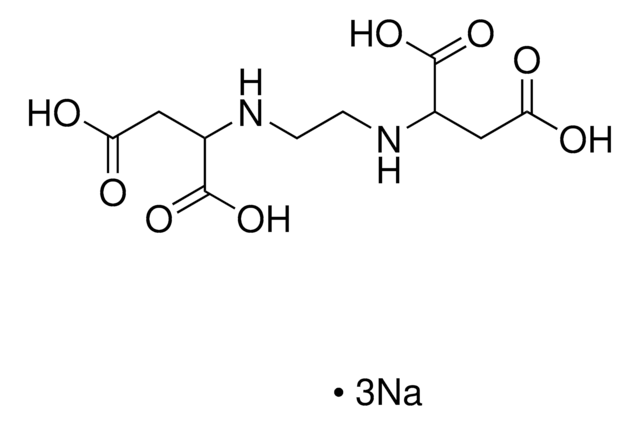495379
Titanium(IV) oxysulfate solution
~15 wt. % in dilute sulfuric acid, 99.99% trace metals basis
Synonym(s):
Titanium oxide sulfate, Titanium oxysulfate, Titanyl sulfate (TiO(SO4 ))
About This Item
Recommended Products
grade
for analytical purposes
Assay
99.99% trace metals basis
form
liquid
reaction suitability
reagent type: catalyst
core: titanium
concentration
~15 wt. % in dilute sulfuric acid
impurities
≤150.0 ppm Trace Metal Analysis
bp
>100 °C
density
1.361 g/mL at 25 °C
SMILES string
O[Ti+3].O[Ti+3].[O-]S([O-])(=O)=O.[O-]S([O-])(=O)=O.[O-]S([O-])(=O)=O
InChI
1S/3H2O4S.2H2O.2Ti/c3*1-5(2,3)4;;;;/h3*(H2,1,2,3,4);2*1H2;;/q;;;;;2*+4/p-8
InChI key
GEXADUANBMINSZ-UHFFFAOYSA-F
Looking for similar products? Visit Product Comparison Guide
Application
- Characterization and properties of titanium (IV) oxide, synthesized by different routes: Discusses the use of titanium(IV) oxysulfate as a precursor in sol-gel methods to prepare titanium oxide solutions with varying pH values (Dontsova & Kutuzova, 2021).
- Thermodynamic modeling of sulfate-acid and sulfate-fluoride leaching of titanium: Analyzes the production of titanium(IV) sulfate and oxysulfate as main products from rutile in sulfuric acid solutions (Dubenko et al., 2020).
- Formation of TiO2 particles during thermal decomposition of Ti (NO3) 4, TiOF2 and TiOSO4: Investigates the thermal decomposition of titanium oxysulfide in acid solutions, forming TiO2 particles (Sofronov et al., 2020).
Signal Word
Danger
Hazard Statements
Precautionary Statements
Hazard Classifications
Eye Dam. 1 - Met. Corr. 1 - Skin Corr. 1A
Storage Class Code
8A - Combustible corrosive hazardous materials
WGK
WGK 2
Flash Point(F)
Not applicable
Flash Point(C)
Not applicable
Personal Protective Equipment
Choose from one of the most recent versions:
Already Own This Product?
Find documentation for the products that you have recently purchased in the Document Library.
Customers Also Viewed
Articles
In many technologies, performance requirements drive device dimensions below the scale of electron mean free paths (λe). This trend has increased scientific interest and technological importance of electrical resistivities at the nanoscale.
Our team of scientists has experience in all areas of research including Life Science, Material Science, Chemical Synthesis, Chromatography, Analytical and many others.
Contact Technical Service
